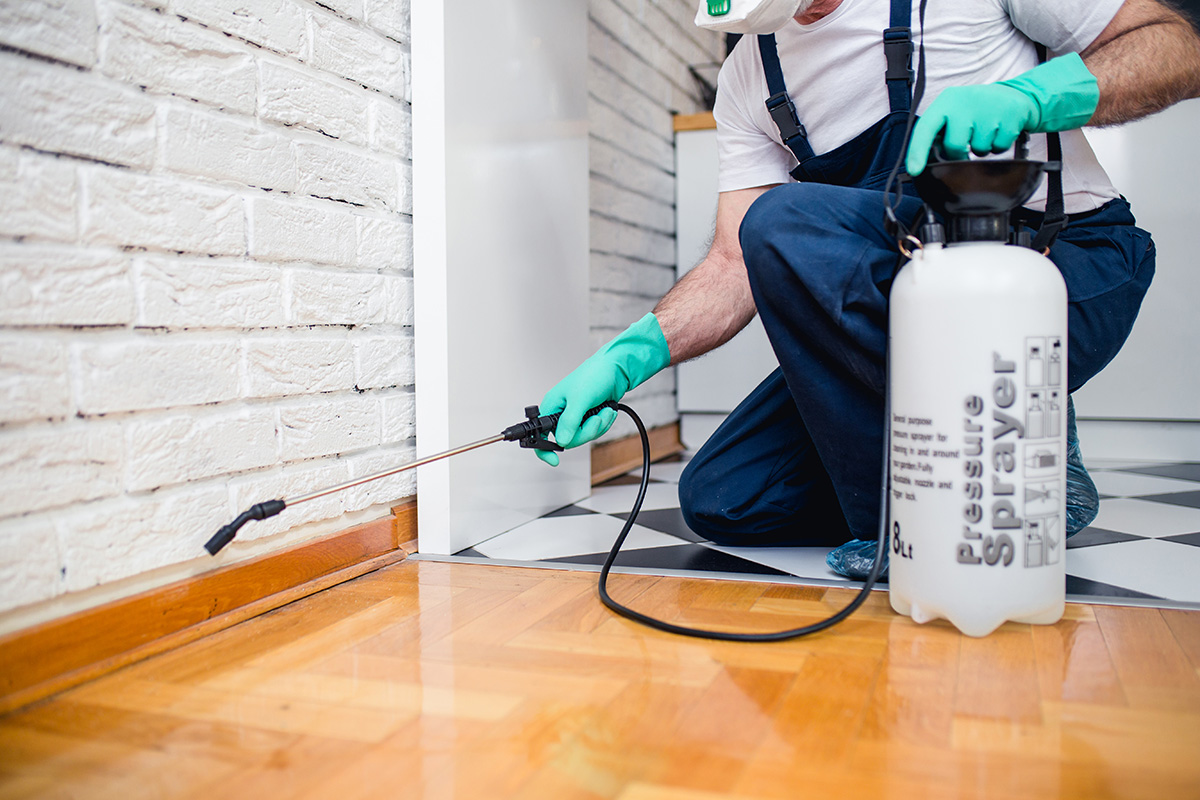Mastering the Art of Pest Control: Proven Methods for Long-Term Avoidance and Obliteration
Bug infestations can be a consistent difficulty for home owners and businesses alike, needing a critical strategy to efficiently manage and eliminate these undesirable intruders. By mastering the art of parasite control with proven strategies for lasting avoidance and eradication, one can develop a positive defense versus prospective risks. Recognizing the habits of parasites, carrying out integrated parasite monitoring strategies, and using all-natural remedies are just a couple of essential components vital to achieving lasting success in this venture. However, the complexities of keeping sanitation, performing regular evaluations, and diligent surveillance play equally critical roles in maintaining a pest-free atmosphere. As the fight against bugs continues to advance, adopting a thorough method comes to be extremely important in guarding your building from possible damage.
Recognizing Parasite Actions
To successfully implement bug control strategies, it is vital to understand the elaborate actions exhibited by different parasites in different atmospheres. Recognizing insect habits is a basic aspect of establishing reliable pest administration strategies. Each parasite types has one-of-a-kind practices and choices that influence their feeding, breeding, and motion patterns. By researching these behaviors, parasite control experts can identify one of the most weak spots in the parasite's life process to target treatments much more effectively.
For instance, rodents like rats and mice are nocturnal creatures that choose dark, remote spaces near a food resource. portland exterminators a1 for bed bugs. Recognizing this, parasite control experts can concentrate on securing access points and removing food attractants to hinder these parasites. In comparison, bugs such as roaches thrive in warm, humid areas with accessibility to water. By addressing dampness issues and sealing splits and holes, invasions can be dramatically reduced.
Implementing Integrated Bug Management
Applying Integrated Bug Administration entails making use of an alternative method to address parasite concerns by integrating various control tactics and techniques. This approach stresses avoidance, tracking, and control of insects through a mix of biological, cultural, physical, and chemical interventions. By integrating numerous strategies, Integrated Pest Administration (IPM) intends to decrease using pesticides while properly managing pest populations.
Prevention is likewise a basic principle of IPM, concentrating on getting rid of aspects that bring in insects, such as water, food, and sanctuary. Routine monitoring and evaluation are important to discover insect infestations early and prevent them from rising.
Moreover, IPM promotes using sustainable and eco pleasant insect control approaches to decrease harm to non-target organisms and the bordering ecosystem - a1 portland bed bug exterminator. By embracing an Integrated Pest Management method, businesses and individuals can effectively manage insects while reducing reliance on chemical pesticides
Utilizing Natural Remedies
Structure upon the structure of Integrated Bug Administration, a shift towards making use of all-natural solutions offers an eco-friendly strategy to pest control. Natural remedies harness the power of nature to deter and get rid of pests without using extreme chemicals that can hurt the atmosphere, people, and advantageous microorganisms.

In addition, planting pest-repelling plants like marigolds, lavender, and mint around homes and gardens can assist prevent pests normally. These plants send out odors that insects discover unpleasant, driving them away without the demand for chemical intervention.
Keeping Tidiness and Health

Consistently examining and cleaning up hard-to-reach locations such as behind home appliances, under sinks, and in storage space wardrobes is vital for identifying and eliminating prospective insect habitats. Clutter should be lessened as pests often seek haven in stacks of things or debris. Carrying out a routine cleaning routine and ensuring all participants of the family or workers are educated on correct hygiene techniques can go a lengthy means in insect prevention. By keeping tidiness and hygiene criteria, the environment ends up being less hospitable to parasites, ultimately sustaining long-lasting parasite control initiatives.
Normal Inspections and Monitoring
Regular evaluations and monitoring play a vital duty in proactively determining and addressing potential insect problems prior to they rise. By performing check over here routine inspections of both the interior and outside of a residential or commercial property, insect control professionals can detect very early signs of invasions, bug entry factors, and problems helpful to pest activity.
Consistent monitoring enables for the very early discovery of parasite issues, allowing swift treatment to stop extensive invasions that can be costly and challenging to eradicate. Moreover, regular inspections and checking help to abide with governing demands and keep a risk-free, pest-free environment for owners. Applying an aggressive strategy through routine examinations and monitoring is a cornerstone of efficient pest administration, supplying comfort and lasting defense against pest risks.
Final Thought
In conclusion, mastering the art of pest control involves understanding insect habits, carrying out incorporated parasite monitoring, making use of natural treatments, keeping sanitation and health, and performing normal assessments and monitoring. By following these tried and tested techniques for long-term prevention and eradication, individuals can successfully manage pest infestations and develop a healthier and much safer atmosphere for themselves and their surroundings.
To successfully execute pest control approaches, it is crucial to comprehend the detailed behaviors exhibited by various parasites in different atmospheres (a1 portland pest control bed bugs). By studying these actions, parasite control view it now specialists can identify the most prone factors in the insect's life cycle to target interventions a lot more effectively
Carrying Out Integrated Insect Management involves using a holistic strategy to attend to parasite concerns by incorporating different control techniques and approaches. By preserving tidiness and hygiene requirements, the atmosphere becomes less welcoming to insects, eventually sustaining lasting parasite control efforts.
By conducting normal assessments of both the interior and exterior of a residential or commercial property, pest control experts can identify very early indications of infestations, bug access factors, and conditions conducive to pest activity.